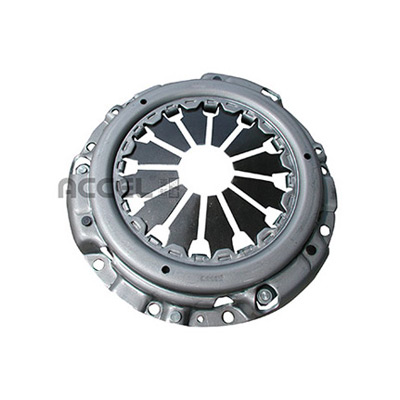- Arabic
- French
- Russian
- Spanish
- Portuguese
- Turkish
- Armenian
- English
- Albanian
- Amharic
- Azerbaijani
- Basque
- Belarusian
- Bengali
- Bosnian
- Bulgarian
- Catalan
- Cebuano
- Corsican
- Croatian
- Czech
- Danish
- Dutch
- Afrikaans
- Esperanto
- Estonian
- Finnish
- Frisian
- Galician
- Georgian
- German
- Greek
- Gujarati
- Haitian Creole
- hausa
- hawaiian
- Hebrew
- Hindi
- Miao
- Hungarian
- Icelandic
- igbo
- Indonesian
- irish
- Italian
- Japanese
- Javanese
- Kannada
- kazakh
- Khmer
- Rwandese
- Korean
- Kurdish
- Kyrgyz
- Lao
- Latin
- Latvian
- Lithuanian
- Luxembourgish
- Macedonian
- Malgashi
- Malay
- Malayalam
- Maltese
- Maori
- Marathi
- Mongolian
- Myanmar
- Nepali
- Norwegian
- Norwegian
- Occitan
- Pashto
- Persian
- Polish
- Punjabi
- Romanian
- Samoan
- Scottish Gaelic
- Serbian
- Sesotho
- Shona
- Sindhi
- Sinhala
- Slovak
- Slovenian
- Somali
- Sundanese
- Swahili
- Swedish
- Tagalog
- Tajik
- Tamil
- Tatar
- Telugu
- Thai
- Turkmen
- Ukrainian
- Urdu
- Uighur
- Uzbek
- Vietnamese
- Welsh
- Bantu
- Yiddish
- Yoruba
- Zulu
dec . 12, 2024 11:19 Back to list
engine timing belt
Understanding Engine Timing Belts A Vital Component of Your Vehicle
The engine timing belt is an essential component of many internal combustion engines, playing a critical role in ensuring the engine operates smoothly and efficiently. Although often overlooked during routine vehicle maintenance, understanding the importance and function of the timing belt can help vehicle owners prevent serious engine problems down the line.
What is a Timing Belt?
The timing belt is a rubber belt with teeth that synchronizes the rotation of the engine's crankshaft and camshaft. These two components must work in perfect harmony to ensure that the engine's valves open and close at the correct time in relation to the position of the pistons. This synchronization is crucial for maintaining the efficacy of the engine, preventing misfires, and protecting against potential engine damage.
Importance of the Timing Belt
Over time, the timing belt can wear out and become damaged due to heat, oil exposure, or simply the passage of time. Most manufacturers recommend inspecting the timing belt every 60,000 to 100,000 miles and replacing it as needed. Neglecting to replace a worn timing belt can lead to catastrophic engine failure. If the belt breaks while the engine is running, it can cause valves to collide with the pistons, resulting in bent valves, broken pistons, and extensive damage that can be very costly to repair.
Signs of a Worn Timing Belt
Vehicle owners should be aware of several warning signs that indicate the timing belt may need to be replaced. These signs can include
engine timing belt

1. Visual Inspection If you can access the timing belt, look for cracks, fraying, or signs of wear. 2. Engine Noises Unusual noises from the engine, such as a ticking sound, could indicate that the timing belt is failing. 3. Engine Performance A decrease in engine performance, including rough running or misfires, may point to timing issues. 4. Oil Leaks Oil leaking from the front of the engine can indicate a failing timing belt cover.
If any of these symptoms appear, it is wise to consult a mechanic immediately to evaluate the condition of the timing belt.
Timing Belt Replacement
When it comes to replacing a timing belt, the cost can vary significantly depending on the make and model of the vehicle, as well as labor costs in your area. Replacement typically involves removing several engine components to access the belt, making it a labor-intensive job. In addition to replacing the timing belt, mechanics often recommend replacing other associated components, such as the water pump, tensioners, and pulleys, during the same service. This preventive maintenance can save costs in the long run, as it avoids future labor charges.
Timing Belt vs. Timing Chain
It is also important to note that not all engines use a timing belt. Some engines are equipped with a timing chain, which operates similarly but is generally more durable and meant to last the lifetime of the vehicle. Timing chains can be more expensive to replace if they do fail, but they typically require less frequent maintenance than timing belts.
Conclusion
In conclusion, the timing belt is a critical component of an internal combustion engine, playing a pivotal role in maintaining the synchronization of engine components. Regular inspection and timely replacement of the timing belt can prevent catastrophic engine failure and costly repair bills. Vehicle owners should familiarize themselves with the signs of a worn timing belt and adhere to manufacturer recommendations regarding maintenance. By taking these steps, you can help ensure the longevity and reliability of your vehicle's engine.
-
Korean Auto Parts Timing Belt 24312-37500 For Hyundai/Kia
NewsMar.07,2025
-
7PK2300 90916-T2024 RIBBED BELT POLY V BELT PK BELT
NewsMar.07,2025
-
Chinese Auto Belt Factory 310-2M-22 For BMW/Mercedes-Benz
NewsMar.07,2025
-
Chinese Auto Belt Factory 310-2M-22 For BMW/Mercedes-Benz
NewsMar.07,2025
-
90916-02660 PK Belt 6PK1680 For Toyota
NewsMar.07,2025
-
drive belt serpentine belt
NewsMar.07,2025

